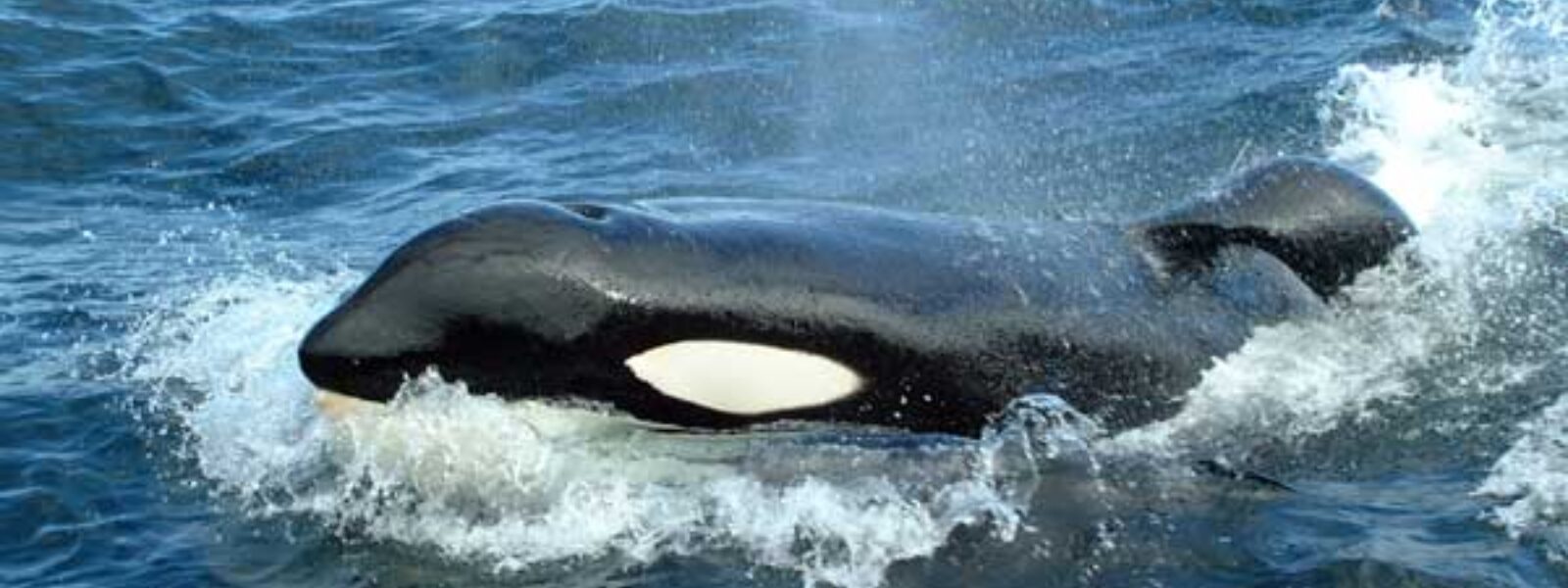

By Mark J. Palmer
A few years ago, best-selling author Susan Orlean, a regular writer for the New Yorker and author of The Orchid Thief among other books, came to our office to research and discuss the Keiko story with us.
Keiko, as many of you know, was the orca star of the hit movie Free Willy. After the film made a huge impact, people began wondering what became of Keiko, who was still languishing in Mexico City’s Reino Adventura, a small aquarium. Why wasn’t Keiko free like Willy in the movie?
Eventually, the International Marine Mammal Project of Earth Island Institute formed the Free Willy/Keiko Foundation and raised the funds needed to move Keiko to a much bigger and better tank at the Oregon Coast Aquarium. After rehabilitation, Keiko was then flown to Iceland and released into a sea pen in his home waters.
The Foundation was then feeding Keiko live fish and reducing his contact with people. With a small boat escort, Keiko was allowed out into the ocean and able to interact with wild orcas. He eventually swam free and lived for another year and a half in the Atlantic Ocean, swimming all the way to Norway.

Keiko's sea sanctuary in Iceland. The location is now being used to house two beluga whales from a Chinese aquarium.
Susan eventually wrote her Keiko story, which appeared in the New Yorker. She recently published a series of her animal stories in her new book, On Animals, and she included her essay “Where’s Willy?” about our favorite orca.
Her story follows the long history of Keiko, who could not just be let loose in the ocean following his rescue from captivity in Mexico. He suffered from some illnesses, including a papilloma virus that caused skin irritation and a rash around his pectoral fins (which can be seen in “Free Willy”), and he was underweight. He needed the experience of catching his own live fish, having been raised on dead fish in captivity.
The logistics were very complicated. He had to have a special box in which he could be cushioned in water and ice as he was flown first from Mexico City to Newport, Oregon, and later from Oregon to Iceland. The Free Willy/Keiko Foundation, with funding from Warner Brothers (courtesy of director Richard Donner and producer Lauren Schuler Donner), the Humane Society of the US, and the pioneer cellular phone magnate Craig McCaw and his ex-wife, Wendy McCaw, had to build a state-of-the-art seawater tank in Oregon and a sturdy sea pen in Iceland’s Westman Islands.

Keiko
Millions of people, especially children, gave money to free Keiko, an accounting nightmare for the Foundation, but necessary to buy the needed equipment, build the facilities, and maintain orca trainers, veterinarians, and other staff for the years-long Keiko effort.
In Iceland, the country’s richest man was pushing for opening up whaling in the North Atlantic. Icelandic fishermen were not keen on sharing the waters with yet another orca that eats “their” fish. The Foundation was able to circumvent these obstacles by working with Iceland’s tourist industry, eager to showcase trips to Iceland.
Ironically, Susan never got a chance to see Keiko, as she arrived in Iceland about a month after he had left his sea pen for good.
“Who wouldn’t want to have seen the great black-and-white whale?” she queries. “Who wouldn’t want to scratch his tongue, look into that plum-sized eye, take a turn around the bay pen on his back?”*
Who indeed?
**********************
(*However, IMMP does not support riding on whales in captivity – like Keiko, they belong in the ocean!)
***********************
You can learn more about Keiko on our website.
***********************
Susan Orlean’s book, On Animals, a delightful collection of her writing on animals domestic and wild, is available in bookstores and online.
***********************
Many of you helped fund the Free Willy/Keiko Foundation effort, and we are eternally grateful for your support and trust in our work to bring Keiko back to his home waters, the only orca ever released from captivity into the wild. We hope you will help fund the International Marine Mammal Project’s continuing efforts to end captivity for orcas and other whales and dolphins, and support the establishment of seaside sanctuaries where these intelligent and gentle beings can be retired from performing repetitious tricks in small tanks. Thank you for your donations!